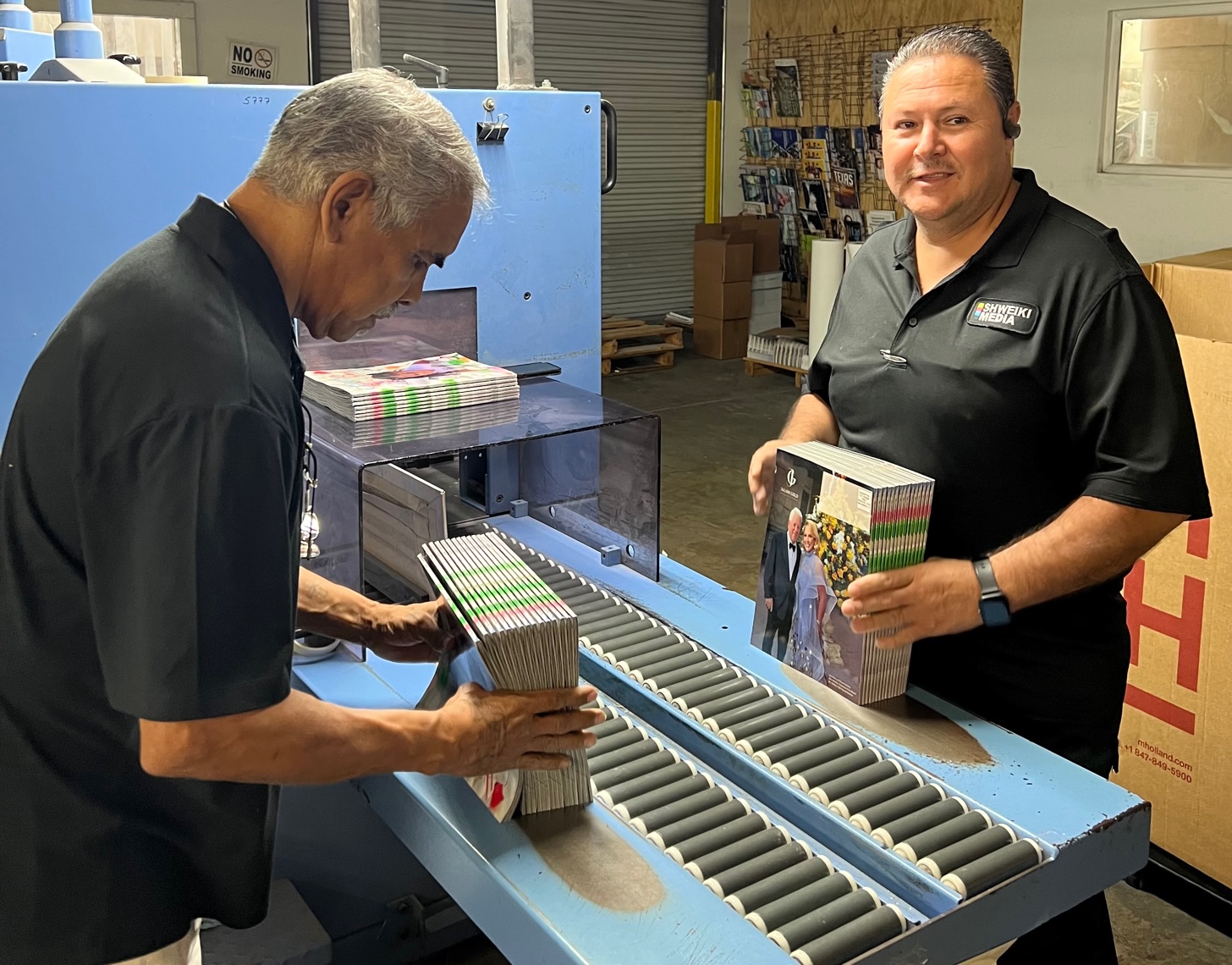Award winning perfect binding operators Jose Macias and Armando Cornado
This binding method is characterized by its sleek and seamless appearance, making it a popular choice in the world of publishing and marketing materials. In this blog post, we’ll delve into the world of perfect binding, exploring its advantages, benefits, applications, and limitations.
Advantages of Perfect Binding:
- Professional Aesthetic Appeal: One of the primary advantages of perfect binding is the elegant, professional appearance it lends to printed materials. It creates a clean, flat spine without visible stitches or staples, making it ideal for projects that demand a polished finish.
- Versatility: Perfect binding can accommodate a wide range of sizes and thicknesses. Whether you’re binding a thin magazine or a thick book, this method adapts to your needs. This versatility is especially advantageous for marketing materials, annual reports, and product catalogs.
- Cost-Effective: Perfect binding is more cost-effective than other binding methods, such as hardcover or coil binding. It strikes a balance between quality and affordability, making it accessible to both small and large publishers and businesses.
- Customization: You have ample opportunities to customize your perfect-bound materials. You can choose from various paper types, cover finishes, and printing techniques to create a unique and eye-catching end product.
Benefits of Perfect Binding:
- Durability: Perfect binding offers durability and long-lasting quality. The glue used in the binding process secures the pages together effectively, preventing them from falling out easily. This is crucial for materials that will see frequent use.
- High-Quality Printing: Perfect binding allows for high-quality printing, which is essential for materials that need to showcase detailed graphics, vibrant colors, or high-resolution images. This method ensures that the printed content looks crisp and impressive.
- Easy to Read and Handle: The flat spine and clean presentation of perfect-bound materials enhance readability and ease of handling. This makes it an excellent choice for novels, magazines, and brochures, as readers find it comfortable to hold and flip through the pages.
Applications of Perfect Binding:
- Books: Perfect binding is commonly used for paperback books, especially novels, self-help books, and non-fiction works. The clean and professional finish appeals to readers and ensures the book’s longevity.
- Magazines: Many magazines opt for perfect binding to achieve a sleek and professional look. It accommodates the varying page counts that magazines often have and showcases the content in a visually appealing way.
- Catalogs and Brochures: Perfect binding is a popular choice for product catalogs and corporate brochures. It provides a high-quality finish, making these marketing materials more enticing and informative.
- Annual Reports: Businesses often choose perfect binding for their annual reports. This binding method gives a sense of importance and permanence to these documents, which are crucial for investors and stakeholders.
- Theses and Dissertations: In the academic world, perfect binding is a go-to choice for binding theses and dissertations. It offers a professional presentation for the culmination of years of research and study.
Limitations of Perfect Binding:
- Page Count Limitation: Perfect binding is not ideal for projects with extremely low page counts. At least 48 text pages plus cover are needed to perfect bind a publication.
- Not Ideal for Lay-Flat Requirements: If your project requires the pages to lay completely flat when open, perfect binding may not be the best choice, as there can be some resistance at the spine.
In conclusion, perfect binding is a versatile and visually appealing binding method that finds extensive use in various industries, from publishing to marketing. When chosen thoughtfully, perfect binding can transform printed materials into polished, high-quality works that leave a lasting impression on readers and customers alike.


